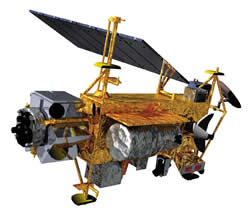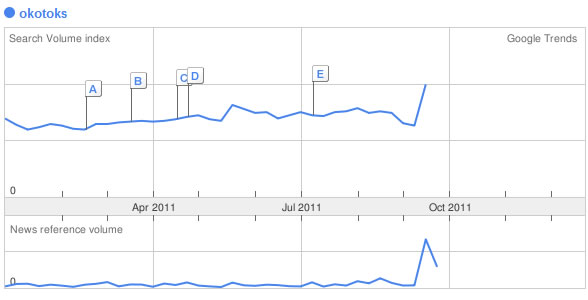

Let’s continue our look at the Okotoks Satellite hoax and some of the lessons learned. Be sure to check out our Anatomy of an Online Rumour post for some additional background.
Rumors are started and consequently spread online all the time. Celebrities “die”, sports figures are “traded” and pictures of the new iPhone are “leaked” on a daily basis. People love gossip and social media helps feed their passion. The Okotoks satellite hoax has a lesson for everyone…
Joe Public – The lesson here is pretty simple. The internet is an amazing source for up to the second information but everything needs to be taken with a grain of salt. As we’ve seen in this example, a misguided piece of information can take on a life of its own in no time. Take a common sense approach to your online news consumption and remember that even the most trusted sources can fall for false information too.
The Town of Okotoks – There’s a valuable lesson to be learned in regards to social media monitoring too. For a 12 hour (or so) period, Okotoks was buzzing all around the world. A quick look at Google Trends shows a sharp increase in Okotoks searches and news references. I think it’s safe to say that the Town of Okotoks website probably saw a spike in traffic as people searched for URAS related material. Here’s a snapshot from Google Trends showing the spike in searches and news mentions for the word “Okotoks”.


Had the town recognized the additional attention, they could have done something with it… despite the whole thing being a hoax. I can’t help but imagine what a place like Banff would have done with the extra attention. Their e-marketing machine would have turned the hype into an impromptu online campaign in a matter of a couple of hours. The debris would probably have had a Twitter account within a few minutes too…
Hypothetically speaking, had the fallen debris rumors been true, the town of Okotoks website and social media profiles would have been looked upon as sources of on the ground information for both residents and onlookers. Would the town have had someone ready and able to launch the online activities? Do they have a plan in place for such an event? Are there other methods of communicate that they would have leveraged? We live in a “now” world and people don’t want to wait hours for information.
I’d be shocked if any community had a communications plan in place in the event of falling space debris but I’m sure most have an emergency communications plan. If social media isn’t a key component of such a plan, it probably should be.
Businesses – Big and Small – A lot of what was touched on above applies to businesses of any size. Information (and misinformation) can travel across the internet at an astonishing rate. Companies need to stay on top of online conversations and monitor those that pertain to their brand. As we’ve witnessed here, rumours and misinformation about anything can come from anywhere at any time. It’s impossible to predict these events so the best a business can do is monitor and engage.
Businesses also need to have an action plan for events like this. It’s not unusual for a company to have a public relations action plan but few have considered adding a social media section. I’ve also seen a number of organizations that have a online communications strategy but don’t have the skills or resources to execute it.
Monitoring and engaging in online conversations used to be an option in the business world. Now it’s an important part of everyday life… or it should be anyways…
Mainstream Media – Social media has brought a whole new element to the news business. “Citizen Journalists” have the power and the ability to scoop the mainstream media on a regular basis. News organizations have turned to social media to help identify leads and stories. This newfound source of information helps get news out faster but can also lead to false information being spread. Most news organizations are still very good at doing their due diligence before reporting a story but as we’re seen here, there are a few that will report unconfirmed information. Social media can help spread this information quickly and it’s virtually impossible to retract something once it’s out.
The reporting of misinformation is nothing new but social media takes it to a whole new level. News outlets are always looking for an edge in the ultra-competitive market and sometimes jumping the gun on a story is a risk they’re willing to take.
The Okotoks Satellite hoax provided an interesting (and local) look at the internet rumour phenomenon. It provided a night of entertainment for those that followed it and a variety of lessons for those involved.




